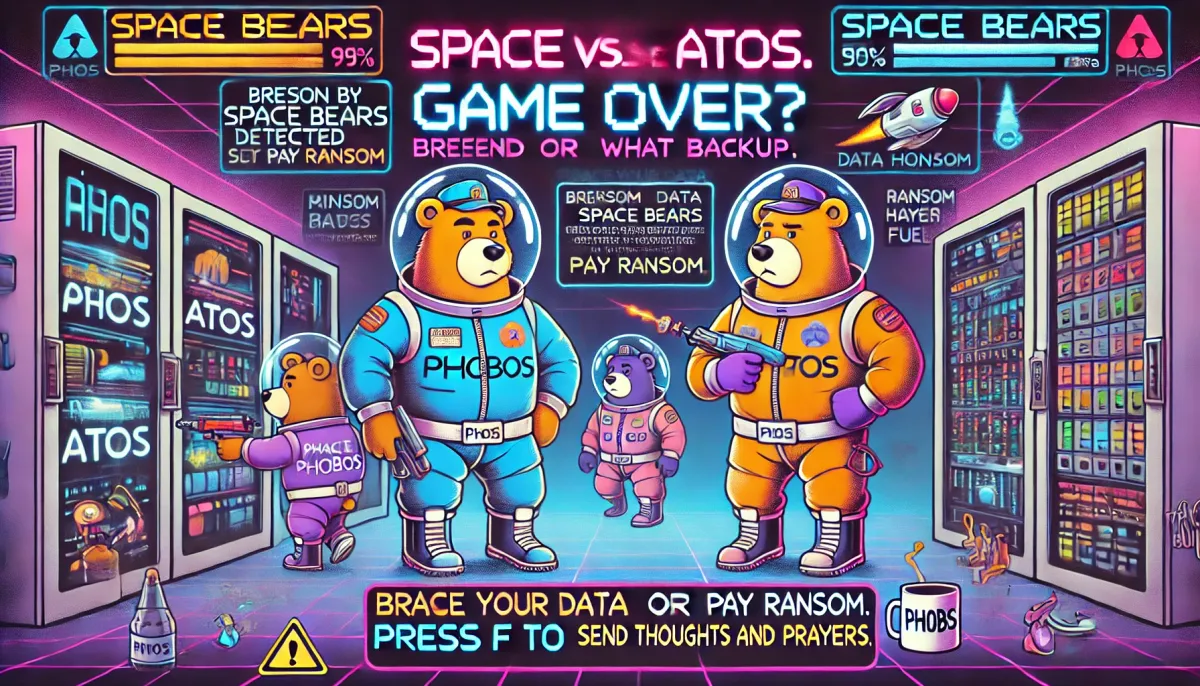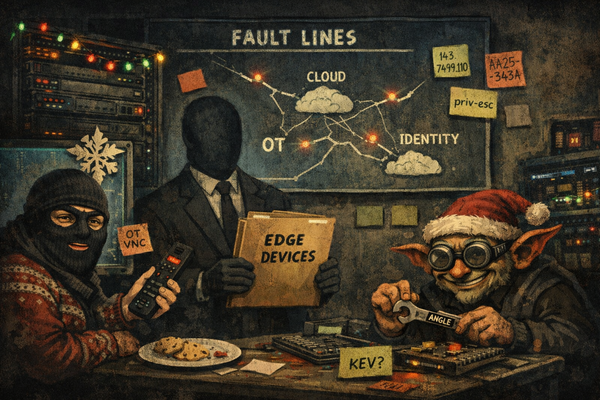Space Bears: Emerging Ransomware Threat with Strategic Affiliations
The 'Space Bears' threat actor is a relatively new ransomware group that emerged in April 2024. They are known for their corporate-themed data leak site and strategic affiliations, particularly with the Phobos ransomware-as-a-service group.

TL;DR
- Emergence and Tactics: Space Bears emerged in April 2024 and employs double extortion tactics, stealing sensitive data and threatening to leak it unless a ransom is paid.
- Affiliation with Phobos: Space Bears is strategically affiliated with the Phobos ransomware-as-a-service group, enhancing their capabilities and reach.
- Notable Victims: Notable victims include US telecommunications firm Hytera US and CORTEX Chiropractic & Clinical Neuroscience.
- Atos Group Incident: Space Bears claimed to have compromised Atos Group's database, but Atos denied these claims, stating that no infrastructure managed by them was breached.
- Third-Party Risks: The Atos incident highlights the importance of securing third-party relationships and the potential risks they pose.
- Vulnerabilities Exploited: While specific vulnerabilities are not detailed, Space Bears likely exploits common vulnerabilities in remote access tools, unpatched software, and weak security configurations.
- Corporate-Themed Data Leak Site: Space Bears is known for their corporate-themed data leak site, which they use to pressure victims into paying the ransom.
Research Summary
The 'Space Bears' threat actor is a relatively new ransomware group that emerged in April 2024. They are known for their corporate-themed data leak site and strategic affiliations, particularly with the Phobos ransomware-as-a-service group. Space Bears employs double extortion tactics, where they steal sensitive data from victims and threaten to leak it unless a ransom is paid. Notable victims include US telecommunications firm Hytera US and CORTEX Chiropractic & Clinical Neuroscience. Recently, they claimed to have compromised the database of Atos Group, a French IT giant, but Atos has denied these claims, stating that no infrastructure managed by them was breached.
Tactics, Techniques, and Procedures (TTPs)
The tactics, techniques, and procedures (TTPs) used by Space Bears are sophisticated and align with those of other prominent ransomware groups. They leverage double extortion methods, which involve encrypting the victim's data and exfiltrating sensitive information to pressure the victim into paying the ransom. This tactic increases the likelihood of payment as it adds the threat of data leakage to the already significant disruption caused by the encryption of critical files.
Strategic Affiliations
Space Bears' affiliation with the Phobos ransomware group is a strategic move that enhances their capabilities and reach. Phobos, known for its ransomware-as-a-service model, provides the infrastructure and tools necessary for Space Bears to conduct their operations effectively. This affiliation allows Space Bears to focus on targeting and compromising victims while leveraging Phobos' established network and resources.
Recent Activities and Third-Party Risks
Recent activities of Space Bears include their claim of compromising Atos Group's database. While Atos has denied these claims, stating that no infrastructure managed by them was breached, they did acknowledge that third-party infrastructure containing data mentioning Atos was compromised. This incident highlights the importance of securing third-party relationships and the potential risks they pose to organizations.
Vulnerabilities Exploited
The vulnerabilities exploited by Space Bears are not explicitly detailed in the available reports, but their use of double extortion tactics suggests they likely exploit common vulnerabilities in remote access tools, unpatched software, and weak security configurations. Organizations must remain vigilant and proactive in addressing these vulnerabilities to mitigate the risk of ransomware attacks.
Assessment Rating
Rating: MEDIUM
The assessment rating is MEDIUM due to the significant potential for harm posed by Space Bears' double extortion tactics and their strategic affiliation with Phobos. While the threat is not imminent, the potential for data leakage and operational disruption is high, necessitating proactive measures to mitigate the risk.
Attribution
Historical Context
Space Bears is a relatively new ransomware group that emerged in April 2024. They quickly gained notoriety for their corporate-themed data leak site and strategic affiliations with the Phobos ransomware-as-a-service group.
Timeline
- April 2024: Emergence of Space Bears.
- December 2024: Claim of compromising Atos Group's database.
- January 2025: Atos denies the claims, stating no infrastructure managed by them was breached.
Origin
The origin of Space Bears is not explicitly detailed in the available reports. However, their affiliation with Phobos suggests they may operate within the same networks and regions as other ransomware groups.
Countries Targeted
- United States: Notable victims include US telecommunications firm Hytera US.
- France: Recent claim of compromising Atos Group's database.
- Other countries: Potential targets are not explicitly detailed but likely include regions with high-value targets.
Sectors Targeted
- Telecommunications: Notable victim includes Hytera US.
- Healthcare: Notable victim includes CORTEX Chiropractic & Clinical Neuroscience.
- Technology: Recent claim of compromising Atos Group's database.
- Other sectors: Potential targets are not explicitly detailed but likely include sectors with high-value data.
Motivation
The primary motivation behind Space Bears is financial gain through ransomware attacks and double extortion tactics.
Attack Types
Space Bears employs double extortion tactics, encrypting victims' data and exfiltrating sensitive information to pressure them into paying the ransom.
Known Aliases
- Phobos: Affiliated with the Phobos ransomware-as-a-service group.
Links to Other APT Groups
No explicit links to other APT groups are detailed in the available reports.
Similar Threat Actor Groups
- REvil: Similar use of double extortion tactics and high-profile targets.
- DarkSide: Similar ransomware-as-a-service model and strategic affiliations.
Counter Strategies
-
Regular Patching and Updates: Ensure all software and systems are regularly patched and updated to mitigate vulnerabilities.
- Actionable Takeaways: Implement a robust patch management process and prioritize critical updates.
-
Third-Party Risk Management: Strengthen third-party risk management practices to secure relationships and mitigate potential risks.
- Actionable Takeaways: Conduct regular security assessments of third-party vendors and enforce strict security requirements.
Known Victims
-
Hytera US: US telecommunications firm targeted by Space Bears.
- Actionable Takeaways: Strengthen cybersecurity measures and incident response plans to mitigate ransomware risks.
-
CORTEX Chiropractic & Clinical Neuroscience: Healthcare provider specializing in chiropractic care targeted by Space Bears.
- Actionable Takeaways: Implement robust data protection measures and employee training programs to prevent ransomware attacks.
Recommendations, Actions, Suggested Pivots, Forecasts and Next Steps..
(Subscribers Only)


![[DEEP RESEARCH] Zero-Days Are a Distraction: 2025’s Biggest Losses Were Stolen Tokens + OAuth](/content/images/size/w600/2025/12/zz-3.png)


